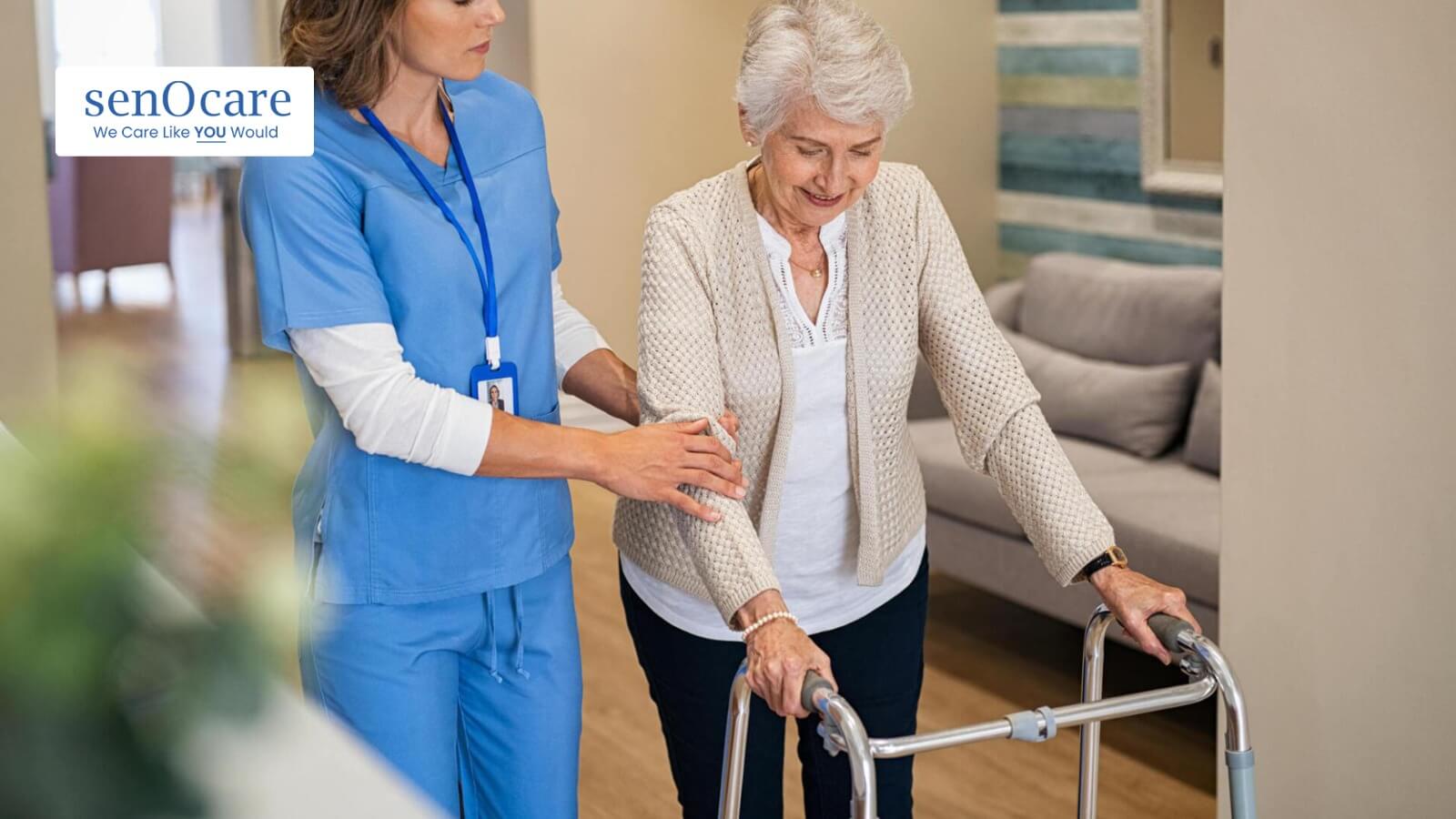
Senocare: Enhancing Mobility, Empowering Lives
Content is medically reviewed by:
Dr. Shakti Singh
As we age, maintaining mobility becomes a challenge that is increasingly crucial for independence and overall well-being. Walkers are indispensable aids designed to support and enhance mobility for the elderly. They provide stable base of support, balance, and confidence, enabling seniors to navigate their surroundings safely. At Senocare, we understand the significance of mobility for elderly individuals and offer a range of walkers tailored to their specific needs.
Medical equipment’s that you can rent from Senocae
•
Automated wheelchair
• Multipara Monitor
• Glucometer
• Oximeter
• Hearing aid
• Stollers
• Toilet Seat Elevator/ Raiser
• Grab bars for elderly
• Walkers for elderly
Importance of Walkers for the Elderly
• Promotes independence and freedom of movement
• Reduces the risk of falls and balance related injuries
• Enhances confidence and self-esteem
• Facilitates participation and independence in daily activities
• Supports rehabilitation and recovery processes and helps distribute body weight
Types of Walkers for Elderly
Standard Walkers
Features
• Lightweight aluminum frame for easy manoeuvrability
• Adjustable height settings to accommodate various users
• Non-slip rubber tips for stability on different surfaces
Pros
• Provides excellent stability and support
• Suitable for indoor and outdoor use
• Simple design easy to use with minimal maintenance required
Cons
• May require more effort to lift and maneuver compared to other types
• Less maneuverable in tight spaces such as narrow doorways
Rollators
Features
• Four-wheeled design for enhanced maneuverability
• Padded seat and backrest for comfort during rest breaks
• Handbrakes for added safety and control
Pros
• Allows for smoother and faster walking pace
• Provides a seat for resting so that short breaks can be taken when needed
• Equipped with storage compartments for personal belongings
Cons
• Bulkier and less portable than standard walkers
• Requires more space for storage and transportation
Three-Wheeled Walkers
Features
• Triangular frame for improved maneuverability in tight spaces
• Adjustable handlebars for personalized comfort
• Lightweight construction for easy handling
Pros
• Offers greater maneuverability indoors and in crowded areas, cramped spaces
• Compact design for convenient storage and transport
• Provides stability while allowing for a more natural walking gait
Cons
• Less stability and more tough to use compared to four-wheeled models
• Not suitable for individuals with significant balance issues
Choosing the Right Walker for Elderly
Individual Needs Assessment
1. Mobility Level: Evaluate the user’s mobility limitations and requirements.
2. Stability Requirements: Determine the level of support needed for safe walking.
3. Portability: Consider the walker’s weight and size for ease of transport.
4. Muscle strength: having right strength in arms and hands for grip and weight shifting ability is important
Height and Weight Considerations
Ensure the walker’s height is adjustable to accommodate the user’s stature comfortably.
Maneuverability and Control
Choose a walker that offers sufficient maneuverability and control based on the user’s mobility limitations.
Features to Look for in the Walkers for Elderly
Adjustable Height
Ensure the walker’s height can be customized to suit the user’s comfort and posture.
Foldability and Storage
Opt for a walker that can be folded for compact storage and transportation convenience.
Brakes and Locking Mechanisms
Select a walker with reliable brakes and locking mechanisms to enhance safety and control.
Wheels and Tires
Consider the type of wheels and tires suitable for the user’s intended indoor and outdoor activities.
Accessories (e.g., baskets, trays)
Choose additional accessories to enhance convenience and functionality, such as baskets or trays for carrying personal items.
Tips for Proper Use of the Walkers for Elderly
Adjusting the Walker Height
Ensure the walker’s handles are adjusted to the user’s wrist level with slightly bent elbows for optimal support and comfort.
Walking Posture and Techniques
Encourage proper posture and walking techniques to maximize the benefits of using the walker.
Using Brakes Safely
Educate users on how to engage and disengage the walker’s brakes safely to prevent accidents.
Negotiating Obstacles
Provide guidance on navigating different surfaces and obstacles while using the walker.
Maintenance and Care of the Walkers for Elderly
Cleaning and Sanitizing
Regularly clean and sanitize the walker to prevent the buildup of dirt and germs.
Checking for Wear and Tear
Inspect the walker for any signs of wear and tear, such as loose screws or damaged components.
Lubrication of Moving Parts
Apply lubricant to the walker’s moving parts to ensure smooth operation and longevity.
Conclusion
In conclusion, while walkers can greatly enhance mobility and independence for the elderly, it's crucial to seek professional advice before making a decision. Healthcare professionals, such as physical therapists or occupational therapists, can provide invaluable guidance tailored to individual needs. They can assess mobility limitations, check balance and train required muscles, recommend the most suitable type of walker, and provide training on proper usage techniques.. At Senocare, we emphasize the importance of consulting with healthcare professionals to make informed decisions that promote well-being and independence for elderly individuals.
